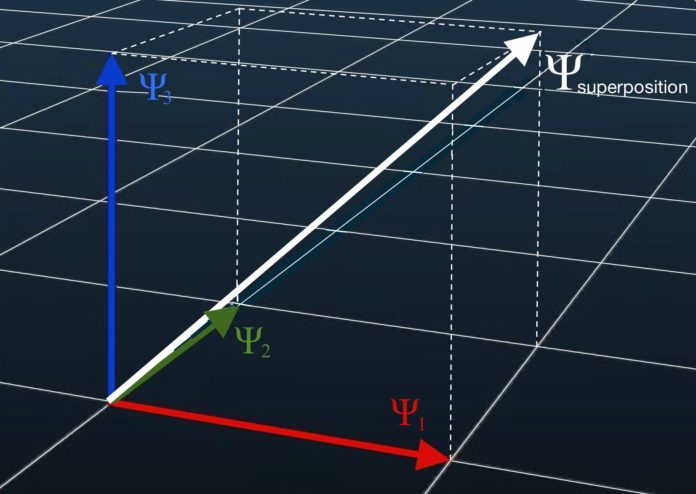Quantum computing studies theoretical computation systems that make direct use of quantum-mechanical phenomena, such as superposition and entanglement, to perform operations on data. Quantum computers are different from binary digital electronic computers, which are based on transistors.
Superposition and Entanglement
It’s only when you look at the tiniest quantum particles—atoms, electrons, photons, and the like—that you see intriguing phenomena like superposition and entanglement.
Superposition refers to the quantum phenomenon where a quantum system can exist in multiple states or places at the exact same time. In other words, something can be “here” and “there,” or “up” and “down” at the same time.
Entanglement is an extremely strong correlation that exists between two or more quantum particles. So strong, in fact, that the quantum particles are inextricably linked in perfect unison, even if separated by great distances. The particles are so intrinsically connected, they “dance” in instantaneous, perfect unison, even when placed at opposite ends of the universe. This might seem well nigh impossible, but is fundamental to quantum world. Einstein, intrigued by the mind-bending phenomenon, described entanglement as “spooky action at a distance.”
A composite system can be expressed as a sum or superposition of products of the individual states of the local constituents.
Superposition helps do away from binary constraints. The working of a quantum computer is based on using the particles in superposition. Rather than representing bits, such particles represent qubits, which can take on the value 0, 1, or both simultaneously.
Quantum computer can hold the information using a system that can exist in two states at the same time. This is possible due to the superposition principle of quantum mechanics. This “qubit” can simultaneously store a “0” and “1.” Similarly, two qubits can simultaneously hold four (22) values: 00, 01, 10, and 11.
Read more on IoT Practitioner.


















